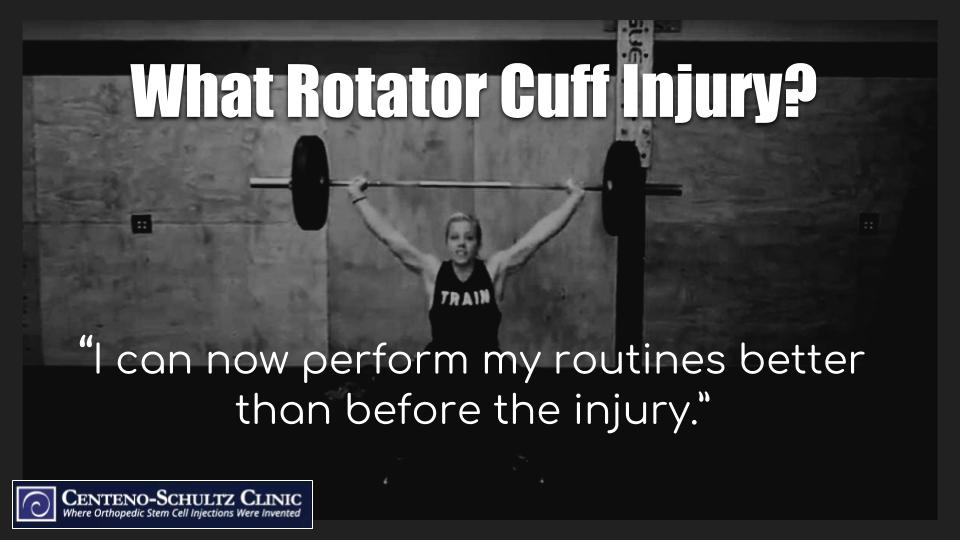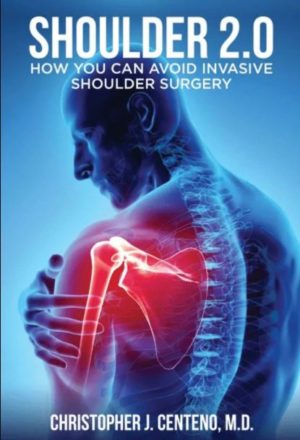When athletes undergo surgery for an injury, it can mean lengthy downtimes and painful recoveries, and oftentimes, they never fully reach their preinjury performance levels. Not Stine Pinilla. When an athlete is at the professional or competitive level, the potential consequences of surgery can be particularly challenging. Last week we discussed why surgery shouldn’t be a given for a rotator cuff tear. Today, we’re sharing the story of a CrossFit regional qualifier who chose interventional orthopedics over surgical orthopedics to treat her rotator cuff injury and was able to train through her treatment.
Stine Pinilla’s Rotator Cuff Story
Stine had injured three rotator cuff tendons and was also dealing with a problem in her cervical spine. Despite her injuries, this CrossFit coach and the regional competitor were able to keep training while she healed after treatment. How?
Before we expand on her story, be sure to watch Stine tell her own inspiring story in the video below:
Sustaining a rotator cuff injury or injuries is common in weight lifters, and if there’s one type of athlete who can place the most strenuous demands on the rotator cuff, it’s a CrossFit competitor. The video above provides a clear demonstration of this as you can see the powerful forces placed on Stine’s shoulder as she lifts. So let’s review how these demands were challenged by a rotator cuff injury.
Rotator Cuff Injury Threatens to Derail CrossFit Competitor’s Goals
In 2017, Stine had climbed all the way from 41st place in her CrossFit division in the state of Colorado to 2nd place, qualifying her for the 2017 CrossFit Regional competition. Her hopes of qualifying the following year for a second regional competition were threatened, however, when she began struggling with shoulder pain. After an MRI, she was diagnosed with a rotator cuff injury. Knowing rotator cuff surgery would bring her training to a complete halt and likely completely derail her chances of qualifying for the regional competition for a second time, it simply wasn’t a workable option. Stine attempted conservative treatments, but these didn’t help.
An Interventional Orthopedics Solution for Stine’s Rotator Cuff Injury
In October of 2017, Stine made her way to us. Dr. Schultz examined her and found that, yes, she had injuries to three major rotator cuff tendons, but this wasn’t all. She also had a previously undiagnosed issue in her cervical spine. Why was this a pertinent finding? The cervical spine is the portion of the spine that lives in the neck; it’s this part of the spine that supplies nerves to the shoulder. In other words, if there is damage to the cervical spine, this can create ongoing problems and pain in the shoulder, and this was indeed what was happening with Stine. Clearly, a rotator cuff surgery wouldn’t have addressed the primary cause of Stine’s rotator cuff injury and shoulder pain.
Stine’s case was a challenging one due to time: she had a massive goal to achieve (CrossFit 2018 regional qualification), and she only had until February of 2018 (just four short months) to be ready for it.
Dr. Schultz’s treatment protocol utilized a high dose of her own platelets (high-dose platelet-rich plasma, or PRP) injected under precise ultrasound guidance into her rotator cuff. In addition, Dr. Schultz injected platelet lysate (growth factors that were extracted from Stine’s platelets) around the nerves in her neck that were irritated and therefore creating chaos and causing pain in her rotator cuff. To see what this looks like, you can watch Dr. Schultz actually performing another rotator cuff treatment at this link.
Stine Pinilla received PRP injections for her rotator cuff injury in both November and January and continued to train throughout the duration of her treatments. Had she opted for surgery, this time would have been spent recovering, with shoulder movements limited by a sling and other recuperation devices. What was the result of her decision to continue to train during this time? On February 22, 2018, her training paid off, and once again she qualified for the CrossFit Regionals!
Athletes no longer have to settle for major highly invasive surgeries that not only take them out of the game for months but also often result in the inability of the athlete to achieve preinjury levels of performance. In most cases, today, athletes can opt out of orthopedic surgery and instead turn to interventional orthopedics to treat most musculoskeletal conditions and injuries. Eliminating potential surgical damage and complications and experiencing faster recoveries and, in some cases, the ability to continue training, should be any athlete’s primary goal. It certainly was for one inspiring athlete who trained through treatment and achieved her CrossFit dreams!

